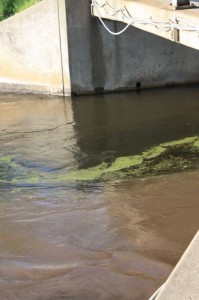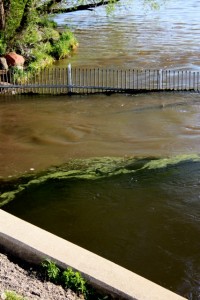A Week in our Shoes
We had a busy, busy week last week. Want to hear about it? Here’s a snapshot of some of the day-to-day and out-of-the-ordinary things that fill our days as we work to strengthen Wisconsin’s land trusts…
Ben Niemann (GWC board member) and Sue Niemann with Executive Director Mike Strigel at the WLIA Conference
Gathering Waters’ Executive Director spent last week conference hopping! This may not sound exciting to most of you out there, but we’re land conservation geeks and love the opportunity to hear from industry experts and explore new ideas to enhance our work. The first conference that Mike attended was the Wisconsin Wetlands Association‘s Conference and presented a valuable opportunity to explore the role that land trusts can play in strategically protecting Wisconsin’s wetland gems. The second conference, the Wisconsin Land Information Association Conference, helped advance a current GWC initiative in which we’re exploring how geographical tools and technology can enhance the effectiveness and efficiency of land trust work.
Government Relations Director, Mike Carlson, hard at work at his desk.
Mike Carlson, our government relations director, was busy last week getting ready for the release of the Governor’s draft executive budget (due to be released later today!) To ensure that public funding remains available to land trusts to protect the special places in our communities, Mike works to make the value of land trust work known among our policy-makers. This involves meetings with legislators, as well as connecting local land trusts with their legislators to tell the stories of how their work enhances the quality of life of citizens across the state.
Land Trust Program Director, Kate Zurlo-Cuva, looking happy to work with Wisconsin land trusts!
Kate spent the week reviewing application for support from land trusts across the state. Through our Land Trust Excellence and Advancement Program (LEAP), land trusts can apply for one-on-one services that address their particular needs and enhance their capacity and sustainability. Applications were due last week, and new program participants will be announced in early March. Stay tuned!
Program Assistant and event planner extraordinaire, Becky Binz
Sara and Becky have been busy preparing for our upcoming Land Legacy Gathering - a fun and inspiring event that honors the people who make our work possible. This year we’re thrilled to partner with the Driftless Area Land Conservancy — a special land trust in southwestern Wisconsin working to protect the rugged features and ancient geology of Wisconsin’s driftless area. If you’d like an opportunity to tour one of the region’s most beautiful protected properties, meet GWC and land trust leadership, or just enjoy some locally-sourced food and drinks, mark your calendar and join us on April 27th!
Associate Director, Sara DeKok
At GWC, we love Wisconsin — and all of the special places that make it home. And these are are just a few of the things that we go to work to do to help people protect those places for all of Wisconsin.
What did you do last week to help protect Wisconsin’s special places. We’d love to hear your story! Share it with us here or email [email protected].

